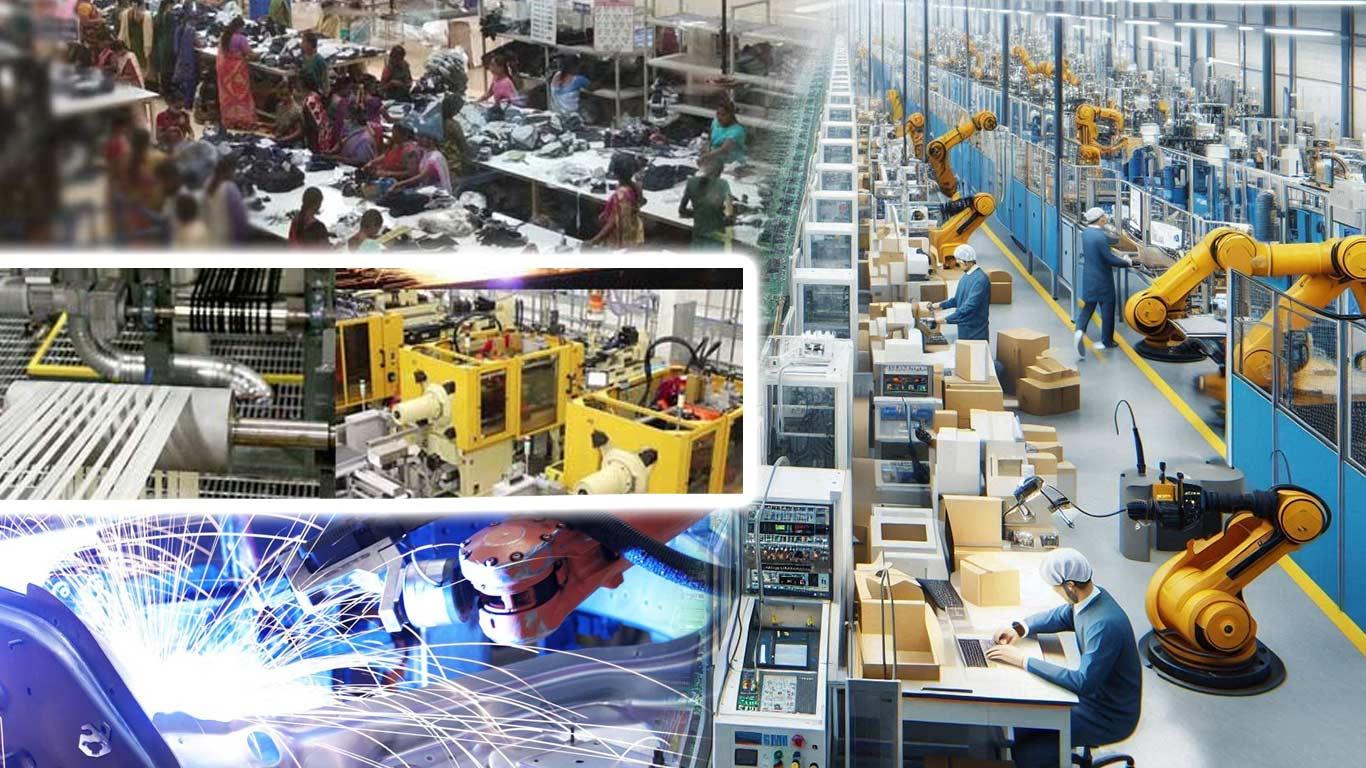
Six Industrial Sectors Account For Half Of India's Manufacturing GVA: NSO Data
Fresh data from the National Statistical Office (NSO) reveals a highly concentrated contribution to India's formal manufacturing sector, with only six out of 29 major industries accounting for over half of the sector's gross value added (GVA) in the fiscal year 2022-23.
According to the Additional Annual Survey of Industries (ASI), these six sectors-basic metals, chemicals, refined petroleum, motor vehicles, pharmaceuticals, and food products-collectively contributed 52.6 per cent to the total manufacturing GVA.
The figures underscore an ongoing imbalance in productivity across India's manufacturing landscape, as the majority of industries make only modest contributions to GVA.
The data also reveals a slight reduction in the share of these six dominant industries from 55.78 per cent in FY22 to 52.6 per cent in FY23, with basic metals and chemical products alone accounting for 22 per cent.
While the combined share of pharmaceuticals, basic metals, and chemical products dropped, sectors like motor vehicles, food products, and refined petroleum improved their GVA contributions.
Regional dynamics further highlight the concentration in the sector, with just five states-Maharashtra, Gujarat, Tamil Nadu, Karnataka, and Uttar Pradesh-representing over half of India's manufacturing GVA.
Maharashtra led with 16.3 per cent, followed by Gujarat (14.8 per cent) and Tamil Nadu (10.3 per cent). Collectively, these five states contributed 54.7 per cent, up slightly from the previous year's 53.3 per cent.
The manufacturing GVA expanded by 7.3 per cent in FY23, reaching Rs 21.97 trillion. Employment within the formal manufacturing sector saw a significant increase, marking the fastest growth in 12 years, with 1.3 million new jobs added, compared to 1.1 million in FY22.
This brought the total workforce to 18.5 million, a year-over-year increase of 7.4 per cent. Meanwhile, the number of registered factories rose from 249,000 to 253,000.
The survey, which includes establishments under the Factories Act of 1948 and those in beedi, cigar, and electricity manufacturing, offers critical insights into shifts within India's manufacturing sector.
The data suggests a growing trend of capital concentration and workforce growth within a handful of key industries and states, underscoring both the opportunities and challenges for balanced industrial growth across the country.
(KNN Bureau)
Legal Disclaimer:
MENAFN provides the
information “as is” without warranty of any kind. We do not accept
any responsibility or liability for the accuracy, content, images,
videos, licenses, completeness, legality, or reliability of the information
contained in this article. If you have any complaints or copyright
issues related to this article, kindly contact the provider above.


















Comments
No comment